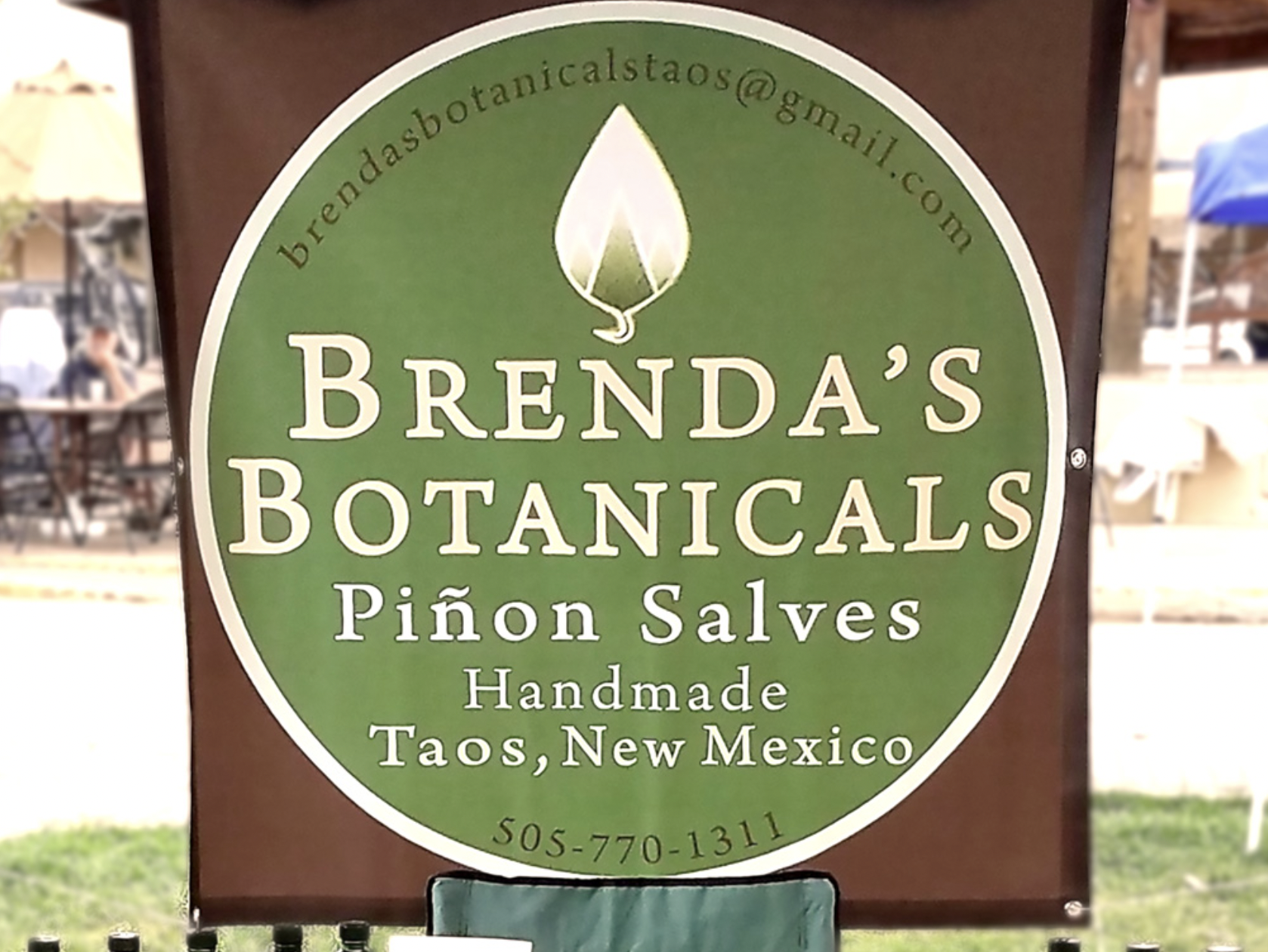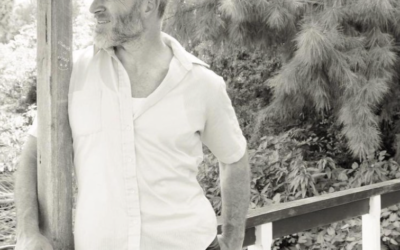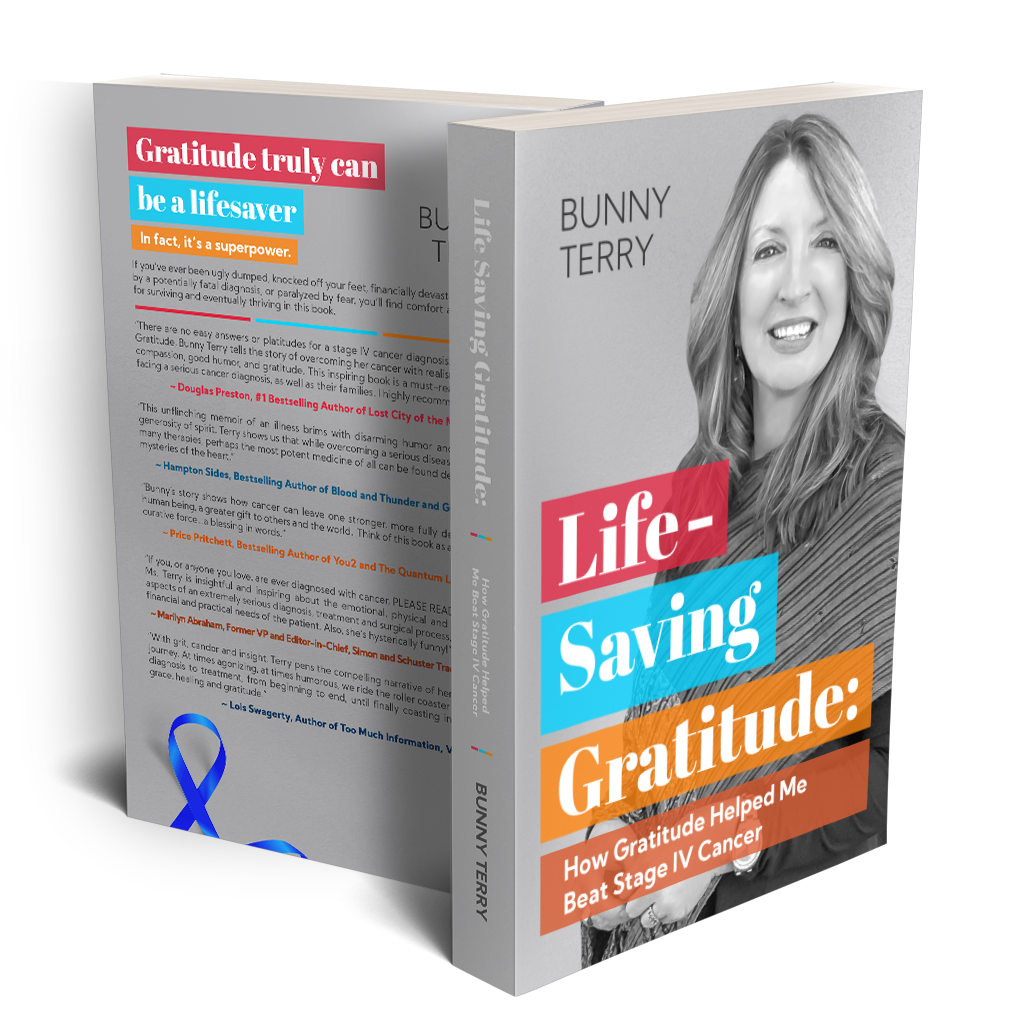About the Episode:
If you’re from New Mexico you know we like to use natural means for healing and medicine. Brenda Archuleta has taken that tradition and turned into her passion and business. Hear more about Brenda and her creations at Brenda Botanicals on this episode. She will give some great tips as well as share where you can find her online or maybe at your local farmer’s market!
Links
Brenda’s Botanicals website
Bunny’s Website
Bunny’s Instagram
Buy Lifesaving Gratitude the book
Podcast music by Kene Terry find “New Mexico” on Spotify

Featuring:
Brenda Archuleta
“Brenda Archuleta, of Brenda’s Botanicals, learned the importance of preserving these traditional healing practices of New Mexico’s culture. Brenda grew up in Cerro, NM and currently resides in Taos. She has been involved in the healing arts for 14 years, as a massage therapist, and has always felt the need to be of service to people. Owning her own retail store for 15 years, she eventually transitioned into earning her massage license, which enabled her to work with people one on one in a more healing environment. Brenda created this line of piñon (trementina) salves: piñon soaps, lotions, and oils.”
questanews.com/brendas-botanicals-brings-sappy-banter
Episode Transcript
Bunny : (00:00)
Hi there. I’m Bunny Terry, and you’re listening to the I Love New Mexico podcast. Whether you’re a native new Mexican, who’s lived here for your entire life, or you’re just considering a visit, this episode is for you. Join us as we share a lot of New Mexico stories, talk about all things New Mexico, and include topics like what’s magical here, where you ought to visit, what’s happening, and the things you absolutely cannot miss in the land of Enchantment. We’re excited that you’re here and we can’t wait to show you what an amazing place New Mexico is, because let’s face it, I love New Mexico. Well, we have a special guest this week on the I Love New Mexico podcast. Um, Brenda Archuleta owns a company, as I understand it, called Taos Botanicals. And, um, we’re dying to hear more about what you’re doing, Brenda, and, and some of what your New Mexico story is. Tell us who you are and what you’re doing.
Brenda : (01:10)
Thank you. Hi, Bunny. My name is Brenda Archuleta, and I own a company called Brenda’s Botanicals Taos. And, I’m from Northern New Mexico, born in Taos, raised in a little village north of Taos called Sero New Mexico. It’s about, um, 25 miles north of Taos. Um, so homegrown, as homegrown as you can be, I guess. Um, and so what I’m doing with my business basically is, um, so everything I make is all, um, uh, traditional pinon based products from different parts of the pinon tree. And it’s my way of continuing to share the, um, the traditions of my cultures, um, my mestiza culture, a mixture of indigenous and Spanish. Um, and so I go out and I harvest all of my, um, sap from the pinon trees, sap
Bunny : (02:48)
That’s so interesting. Brenda. Is this something that somebody in your family did before you, or is it just something that you realized you could do on your own? I’m
Brenda : (02:58)
Curious. Um, so, um, growing up where I did in, in the smaller communities, you know, what we call remedios in Spanish, which will, you know, the, the old traditional remedios/ remedies, um, I grew up with those all around me. You know, um, it wasn’t something that somebody necessarily like a grandmother or a great-grandmother taught me. I was fortunate to grow up next to my grandparents and my great-grandparents. So these old traditions were embedded and, you know, they were always around us As I, um, grew older, I moved away, of course, from the country, ’cause I wanted to go to the big city, to Albuquerque to go to school. I was there for a while, and then I moved back to Taos, actually. Um, and so it was back, it was when I moved back to Taos that I was actually, um, reintroduced to these old traditions.
Brenda : (03:51)
And I was fortunate enough to, um, connect and have a really great friend. He was a medicine man from Isleta Pueblo. His name was Joe Jojola. And he actually really helped me reconnect with my roots, um, in a way that I could learn from the plants and, um, do what I’m doing now, really. And I’ve also had the, um, pleasure of working with an eighth traditional curandero that lives up in Taos now, and just learning from her and learning to connect more with the earth and, um, as part of my, you know, healing process. So through all of these adventures, I guess, I actually just started doing more research and learning and teaching myself. But it was all basically, um, coming back to my, um, my traditional roots, um, growing up in northern New Mexico, which is one of the things I love about New Mexico is that I have been able to experience all of these things from childhood growing up, basically on the banks of the Rio Grande, you know, as part of my, um, you know, as part of my upbringing, which was just so natural to us. You know, we would go out harvest wood, um, for the winters, and it was always, um, you know, tradition to collect sap or we’d go, um, harvest pinon nuts with my grandparents and great grandparents. So pinon has always been a part of my life, um, you know, just traditionally. And so now, like evolving with it and learning more about, about the tree medicine and doing my own research and actually creating, um, more products from my own research has been a true blessing. I was actually, um, I actually had the opportunity to go to Utah, um, a few years ago, um, and learned from a master distiller how to distill. So to make pure pinot needle essential oil out of the needles has been just like such a huge, amazing endeavor. And so it just continues to evolve and grow with what I’m, yeah, with my business and what I’m doing. And also, you know, continuing to just share the traditions of my, of my upbringing.
Bunny : (06:11)
So one of the things that I always want, I don’t want us to always assume that we are only talking to people from New Mexico because we have a lot of guests, um, a lot of listeners who are from all over the world. I mean, we have some subscribers from Africa and from Dubai and from, um, Canada, a couple of people in Brazil. And so I would love for you to explain to them, we’ve used some, um, some terms that might, they might not find familiar. So, um, maybe explain first of all what a curandero is. And also I’m, I’m interested in hearing about, um, your friend Joe Jojola, because my son went to school in Albuquerque with a young man who his parents were, um, Isleta Pueblo as well, and that was his last name. Explain to our guest, um, what a curandero is, and then what Joe Jojola did as a medicine man. I think it’d be cool for people to know that piece.
Brenda : (07:16)
So it’s a, it’s a Spanish name, so the translation in English is to cure. So a, uh, traditional curandero is usually would be like in the villages, it would be like the, um, like the healer in the villages that would come and, you know, help deliver babies and help with you know, administering natural herbal remedies for sicknesses. Um, a lot of prayer is involved, um, you know, it’s, it’s healing, um,
Bunny : (08:13)
And the medicine man. I’m curious about, um, what, so,
Brenda : (08:16)
So that, so this is kind of an interesting story. It’s actually a really great one. So my friend Joe, so he was born, and raised in Isleta. But he was actually taught his medicine from Mescalero, um, from a Mescalero medicine woman. She adopted him. She knew he was the one that needed to keep on to carry on her traditions. So many years ago, when I was back in Taos, um, Joe would, um, get, I wouldn’t say hired, but he, I had some really great friends from Israel and my friend Dorit(sp.) From Israel would bring, um, groups of people from Israel to come and learn about traditional, um, new Mexican medicine and, um, other, you know, other traditions of New Mexico. So she would invite Joe to come and speak to these groups of people I was having. We were all at a dinner party, um, with this group of people, and Joe was sitting on the porch and he had a jacket on that said, Mescalero Apache. So I went up to him and I said, well, my great-grandfather was raised in Mescalero with his grandmother. And so, um, so you know, we began an amazing conversation. And from there, um, my work with him began, um, you know, he would come to Taos and visit and we would do, um, healing work together. He would do healing on me. He would take, he’d take me out into nature and, you know, just, um, share, share, um, I guess information with me. Yeah. So that was, um, yeah. So that was the basis of our, of our relationship. And it just evolved over years. You know, he was just a very dear, dear teacher. He passed away, um, a few years ago. Um, yeah, and I, I didn’t know family from, from, um, from Isleta, but, uh, yeah, he was a very, very special person in my life.
Bunny : (10:19)
I, so this is really interesting because, um, there are lots of things, um, that, you know, obviously I grew up not in a traditional Hispanic family, but a traditional, um, Anglo family of homesteaders that came to New Mexico right after the turn of the last century, right? Um, like in 19, 19 0 5, 19 0 8. And, um, they used, um, different, I mean, I mean, one of the weird things that my family would always use, that my mom, even, even if you got a cut or you, like you stepped on a nail, she’d make you put your foot in a basin of kerosene or, you know, which is sort of like, I mean, it’s different, but it’s similar to turpentine, and you’re talking about using properties from, um, pine, um, I want, I want people to understand people who are not familiar with New Mexico, that the pinon is, is a pine, a sort of pine tree as well. So it’s interesting that we had sort, sort of similar, um, remedies at home. I’m curious, what are the healing properties of, um, pint, pinon, the needles, the bark? What are, what are you using? Tell me. So
Brenda : (11:41)
I’m using, so for my, um, for my salves, which I showed you a picture of, and I’ll just, um-Huh
Bunny : (11:47)
Brenda : (11:55)
So this is, this is the sap of the tree in Spanish. We call this
Brenda : (12:46)
You’ll hear a lot of stories. One of the things that’s really wonderful and really interesting for me when I go, um, to places like Albuquerque, actually when I do shows in Albuquerque, you know, so many people left from the smaller communities to go to the big city like I did. So I get a lot of people that come to my booth and say like, oh my gosh, this reminds me of home. Yes, we used to pick this when we were, when we were kids. This is
Brenda : (13:27)
So yeah, this was one of the things. Um, um, I, so the needles from the tree, which I just harvested a bunch yesterday, um, I make face and body oil. The needles have a lot of antioxidants and vitamin C, so just so very nourishing to the skin. Um, it’s actually all I use as a facial oil, and I have a lot of customers that, um, have had a lot of amazing results. Um, it’s also a natural analgesic, great for pain, great for sore, fatigue muscles, calming to the nervous system. So it just has a lot of other magical properties. In fact, yesterday I just had, um, call from one of my customers from Texas that was here over the summer that was in town, and wanted to buy a bunch of oil from me for her daughter, because it had just like, um, cleared her daughter’s eczema, rapidly. It was really amazing. And I also infused with essential oils. So I have like my plain original blends, and then I like to infuse with different essential oils that have different properties as well to make them a little bit, um, stronger and for different uses. Yeah.
Bunny : (14:32)
Well, I can’t imagine what it smells like at your house where you’re making all of this. I bet it’s amazing
Brenda : (14:38)
Bunny : (15:29)
Well, that’s funny because when we used to go for a walk at night in Albuquerque, my kids would say it smells like an incense bowl.
Brenda : (15:48)
I do, yes. It’s, Brenda’s with an s Botanicals, Taos, TAOS. A lot of people out of the state don’t know how to spell Taos, TAOS, um, uh, brenda’s botanicals taos.com. And you can also find me on Instagram and on Facebook under Brenda’s Botanicals Taos.
Bunny : (16:10)
So I want to… I’m sure you’re also doing shows on occasion. Is there somewhere you’re gonna be in the next few weeks? Are are you, do you have anything coming up where people can come and find you and meet you in person?
Brenda : (16:25)
Uh, yes. So every Sunday I show at the rail yard Artisan Market. So we are part of the Santa Fe Farmer’s Market and the Santa Fe Farmer’s Market Pavilion. Um, Saturday is the farmer’s market. Sunday is an artisan’s market. A lot of people don’t know that, but we are, um, uh, local artists in market and there’s a lot of really amazing traditional artists there. Um, so I sell there on Sundays and, um, I will be doing shows. I do the, I show at the Taos Farmer’s Market. I’ll be doing all of the shows at Rancho this year. I do them annually. And, um, different popups around Santa Fe. Um, Los Alamos, actually Albuquerque, I am part of the big rail yards market in Albuquerque as well. Um, and then as far as stores, um, I have several stores up in Taos. Sids Foods market is a big one. Taos Herb Company, milli St. Rogers Museum. Um, I’m not sure who else up there. Um, and then in Santa Fe, um, fruit of the Earth, um, organics, um, 10,000 waves, um, LA Fonda, you can find myself in La Fonda, and then a few stores around.
Bunny : (17:32)
Brenda, you’re busy. My goodness. I am. How do you find time to do what you’re doing and do all those shows? That’s so cool.
Brenda : (17:41)
Well, you know, um, uh, one of the things that I do, so when I go up into the mountains and I try to go as often as possible, even in winter when it’s snowing, um, I will be out in the high, uh, mountains above Santa Fe. Now I relocated down to Santa Fe. So, um, I will, you know, I am in the mountains a lot and, you know, I look at my harvesting time. That’s my, that’s my meditation time and my, my prayer time to connect with, you know, with what I’m doing with the trees, with the earth. Um, and so I don’t look at that as work. So I, so that I make a lot of time for that, because that is really part of what goes into the process. But yeah, I’m busy and, I’m grateful that I am busy.
Bunny : (18:29)
Well, and it’s, and it’s, and I’m grateful that you’re doing things that you know, you’re, you’re doing things that are come from the earth, but also promote your home state. And I mean, we, there’s not another place that has what we have here.
Brenda : (18:45)
You’re absolutely right. There’s nothing, yeah, there’s not another place like, like New Mexico, and I am so grateful to be able to, you know you know, share, you know, these special parts of New Mexico that, um, people wouldn’t otherwise know about. I mean, people know, you know, people are pretty familiar with Santa Fe and the art scene and, and that sort of thing, you know, and, um, yeah, they come here for indigenous jewelry and art as well, and that’s wonderful. Those are all beautiful parts of it, but there’s, there’s more, there’s a lot more that our state has to offer that people don’t really know about. And so for me to share the medicine is one of those things, one of those ways to get that out there.
Bunny : (19:28)
So it’s Brenda’s Botanicals, Taos, TAOS, and, um, I’m gonna come and find you at the Artisan Market on Sunday morning. I know exactly where you are. So
Brenda : (19:39)
Absolutely, yeah. You can also come and get a chair massage. That’s my other hat.
Bunny : (19:44)
Oh my goodness. Oh, that’s so exciting. Um, and, and you know, you can’t order those, uh, on the internet, so you’re gonna have to show up and get those in person, right?
Brenda : (19:53)
Yes.
Bunny : (19:54)
You, and you have for people who can’t see you, because some of this will be, um, somebody will be listening in their car, but you have a glow, so I’ve gotta get some of that skin oil and see, um, how it works for me. You look amazing.
Brenda : (20:08)
Oh, thank you. I appreciate that, buddy. Yes, please come by.
Bunny : (20:12)
I will, I will. Thank you so much for giving us time to talk about what you’re doing, and, uh, it’s, it’s, it’s so interesting what people in New Mexico do, just to, um, get back to their roots and, and, um, also to promote where they live and, and what they love.
Brenda : (20:32)
Absolutely. Yes. And I absolutely love that you’re sharing this. Um, I love New Mexico podcast because it does give, um, people, um, outside of the state and country a chance, a little glimpse into the magic that we are so fortunate to be able to share here.
Bunny : (20:51)
No kidding. No kidding. Thank you so much, Brenda.
Brenda : (20:54)
You’re welcome. Thank you, Bunny. I appreciate it.
Bunny : (20:57)
Thanks to all of you for taking the time to listen to the I Love New Mexico podcast. If you’ve enjoyed this episode, please feel free to share it with your friends on social media or by texting or messaging or emailing them a copy of the podcast. If you have a New Mexico story that you’d like to share with us, don’t hesitate to reach out. Our email address is I love New Mexico blog@gmail.com, and we are always, always looking for interesting stories about New Mexico. Subscribe, share, and write a review so that we can continue to bring you these stories about the Land of Enchantment. Thank you so much.
About the Podcast
Recent Episodes
I Love New Mexico Stories: Graham Stanford
About the Episode: Graham Stanford is an interesting and intriguing...
I Love New Mexico Writers: Anne Hillerman talks “Lost Birds”
About the Episode: Bunny talks to author, Anne Hillerman about her newest...
I Love New Mexico Innovators: Teresa Robinson
About the Episode: Don't let anyone ever tell you that there isn't...










 Bunny Terry is a native New Mexican who grew up on a farm in northeastern New Mexico. Her first writing job was typing stories on index cards on her family’s Underwood, stories that were uncannily like the ones she read over and over in O Ye’ Jigs and Julips, her favorite childhood book. No one thought to save those index cards for posterity, although there is the theory sarcastically circulated by her siblings that they will certainly be worth millions someday.
Bunny Terry is a native New Mexican who grew up on a farm in northeastern New Mexico. Her first writing job was typing stories on index cards on her family’s Underwood, stories that were uncannily like the ones she read over and over in O Ye’ Jigs and Julips, her favorite childhood book. No one thought to save those index cards for posterity, although there is the theory sarcastically circulated by her siblings that they will certainly be worth millions someday. 